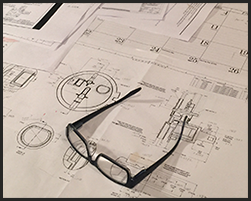 Mold making technology has come a long way over the last decade, but it is the culmination of decades’ worth of trial and error. The result is numerous ways to create molds that can meet many different needs. There are five primary technologies that you can use to create the mold you need.
Mold making technology has come a long way over the last decade, but it is the culmination of decades’ worth of trial and error. The result is numerous ways to create molds that can meet many different needs. There are five primary technologies that you can use to create the mold you need.
Stack Molds
One of the simpler mold types, these molds should be high production/ low cost. The technology to create them has been around for a long time and does not necessarily require a lot of experience. However, to get the most return for your investment, you want a company who knows how to maximize production to create the right kind of stack mold for your specific needs.
Spin Stack Molds
A very specific type of stacking mold, you can rotate the product made with this mold. It is commonly used for assembly (like other stack molds), but this cubed mold can be moved for easier assessment, such as greeting card or sunglass racks. It requires a bit more knowledge to properly create these molds as they must be stable as well as mobile.
Unscrewing Molds
This particular mold is complex and requires a company who has years of experience developing them. Unscrewing molds have threads and are usually multi-cavity to fit a wide range of applications. They are commonly used for industries that package ingestible items, such as pharmaceutical bottles, beverages, and certain types of food items. They must be precise so that the container can be secured, which takes a considerable amount of knowledge and experience to create the optimal mold.
Multi-Material
Also called two-shot, this method saves you both money and time, but only if you use a company that has the knowledge and ability to produce it correctly. It can require a thermoplastic substrate and overmold to increase the performance of the product. The uses for this technology is incredibly broad as it is very versatile. It also gives you the ability to choose more than one color for the different components.
In-Mold Technology
Perhaps the most complex (or tied with two-shot molds), this mold making technology lets you start labeling and designing your product while it is still in the mold. From allowing you to work with living hinges to assembling the final product while it is still in the mold, in-mold technology is incredibly versatile and gaining in popularity.

